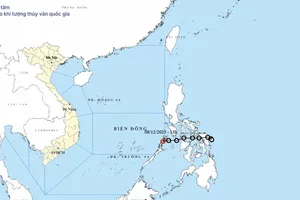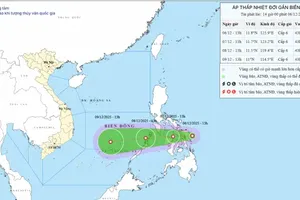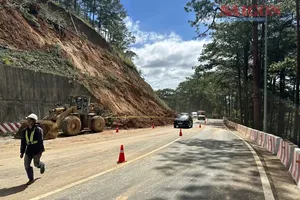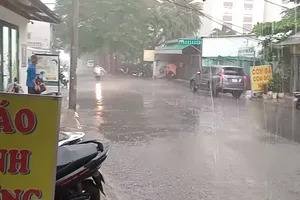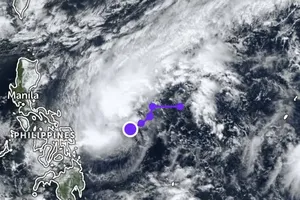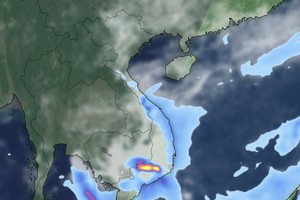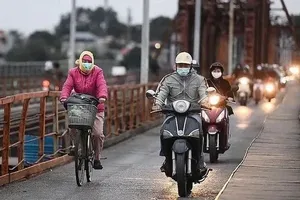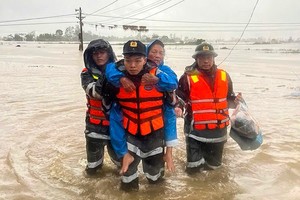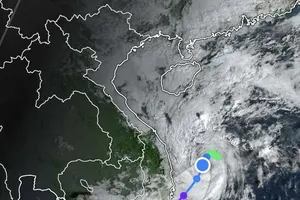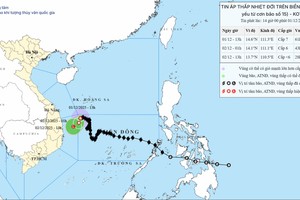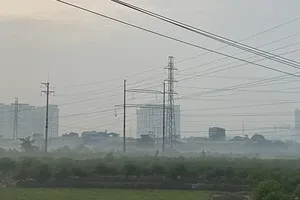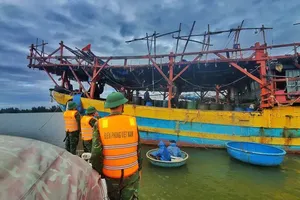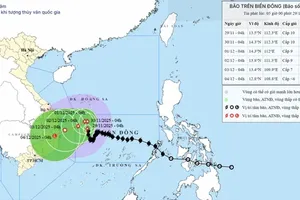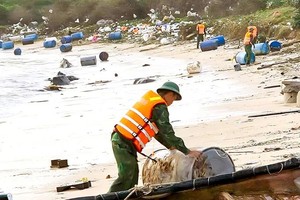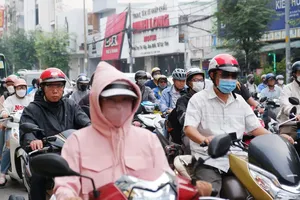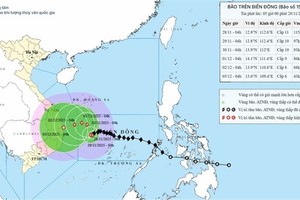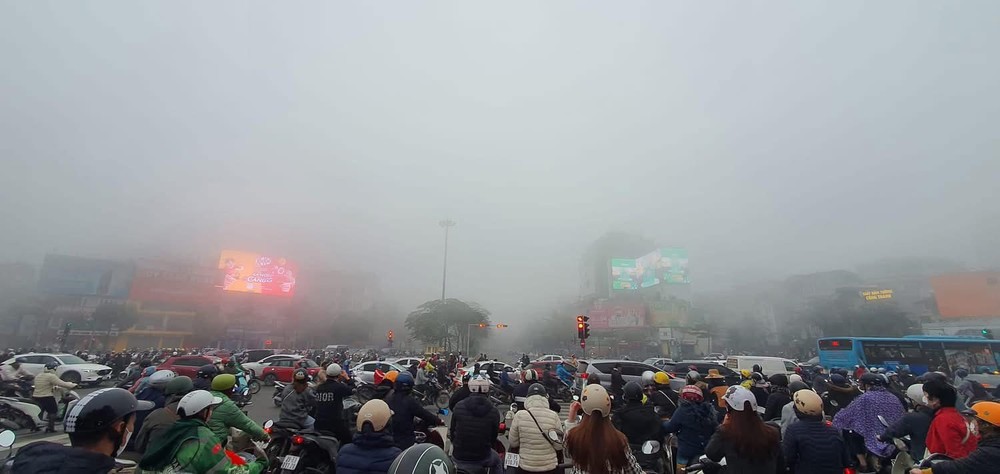
Hanoi remained shrouded in heavy fog, even thicker than in previous days, from morning to midday on February 20. This marks the fifth consecutive day of widespread fog and drizzle across Hanoi and several provinces in the northeastern and northern delta regions.
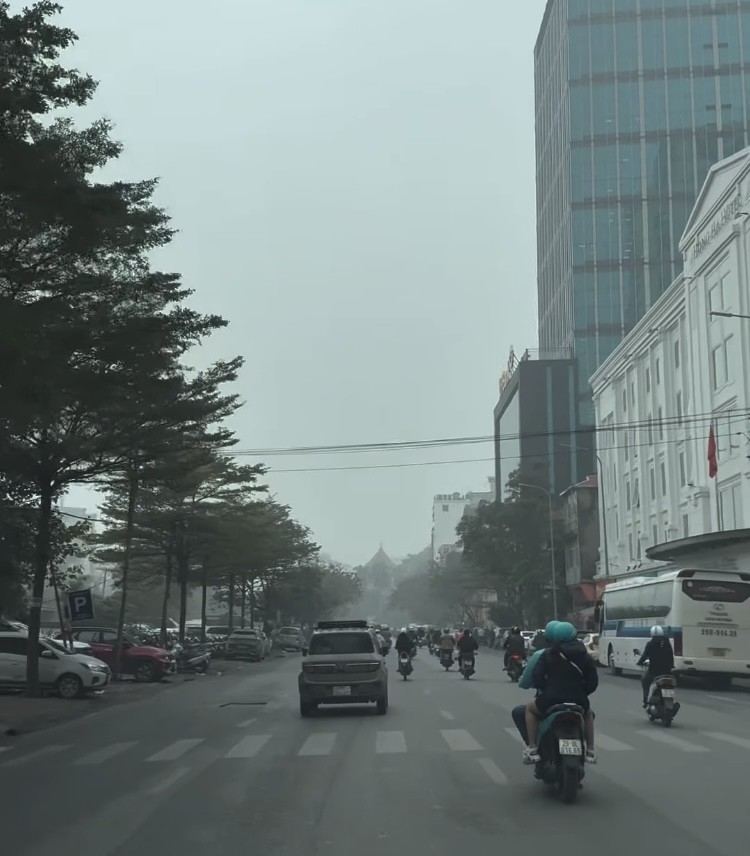
Even by noon, the fog had not lifted, making Hanoi resemble Sa Pa (Lao Cai) or Tam Dao (Vinh Phuc). Major lakes such as West Lake and Hoan Kiem Lake, along with high-rise buildings, appeared hazy, while reduced visibility made traffic more challenging at the city's gateways.
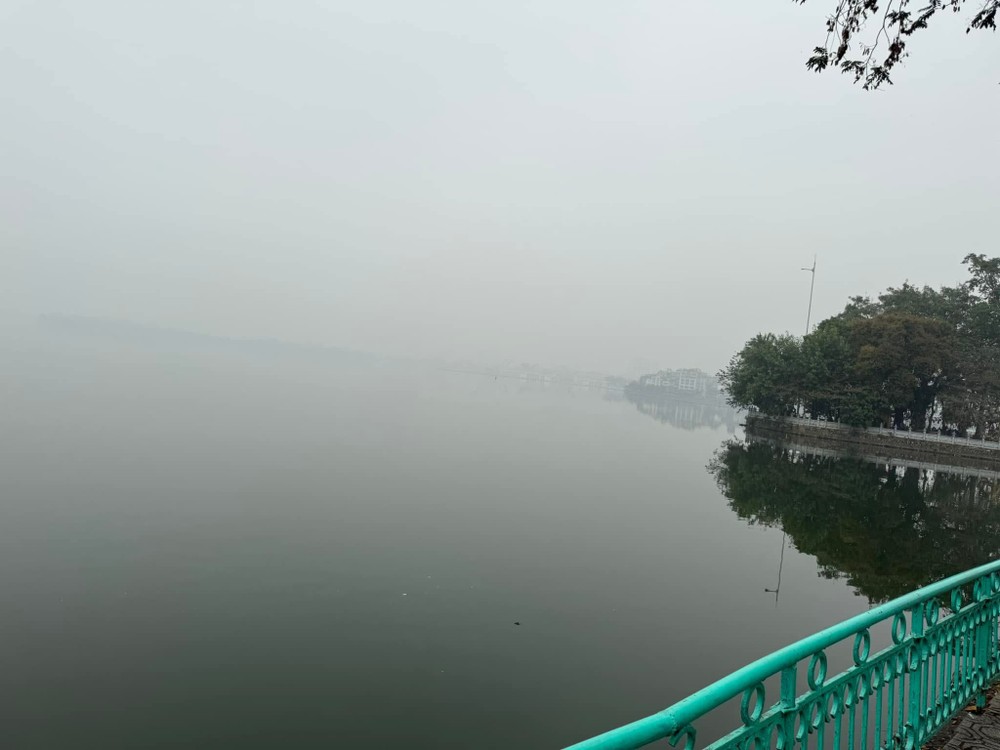
The dense fog not only disrupted traffic within Hanoi but also affected highways. According to the Highway Traffic Police Team No.1, on the Noi Bai – Lao Cai Expressway, the fog caused slippery roads and significantly reduced visibility, especially in the Yen Bai – Lao Cai section, where the road has only two lanes and no hard median barrier.
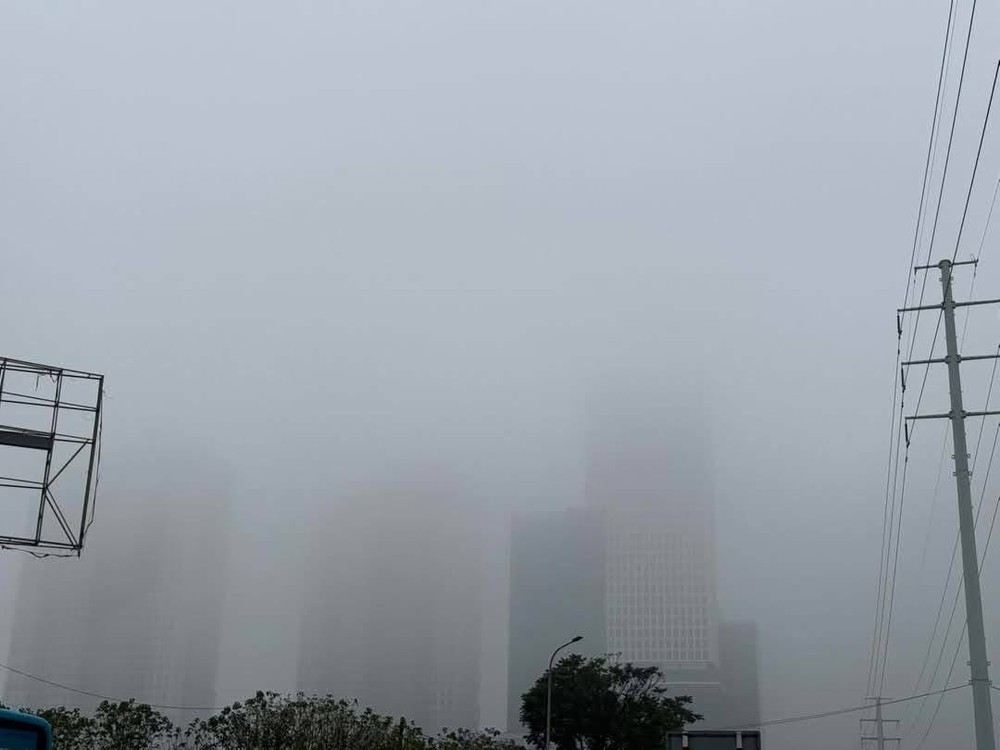
Authorities advised drivers on the Noi Bai – Lao Cai Expressway to maintain a safe distance of 50-100 meters, reduce speed, stay alert, and follow traffic regulations. Drivers should avoid illegal overtaking and refrain from using the emergency lane unless necessary. In case of vehicle issues, they should move to the emergency lane or designated stop areas, activate warning signals, and place hazard signs 100-200 meters behind their vehicle.
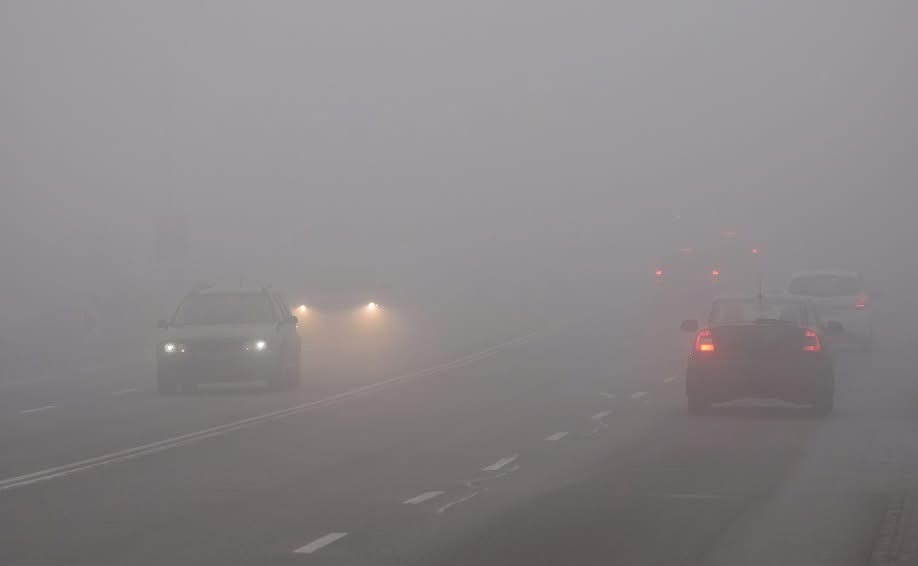
Explaining the dense fog that made Hanoi resemble Sa Pa and Tam Dao, a meteorologist from the Vietnam Meteorology and Hydrology Administration said heavy fog in mid-to-late February results from multiple weather factors.
First, this is the transition period between winter and spring, when cold air weakens but still has some influence, while humidity rises due to southeastern winds carrying moisture from the sea.
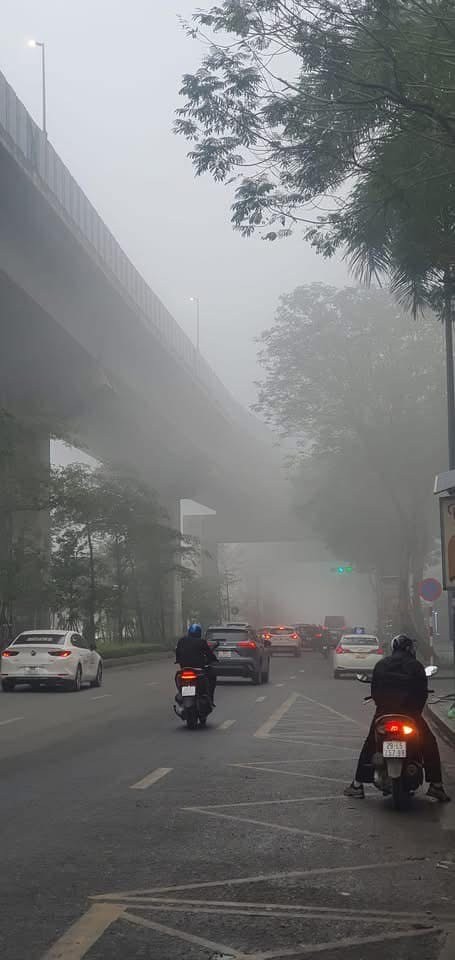
Second, nighttime and early morning temperatures drop sharply, causing moisture in the air to condense into fog. Hanoi’s numerous rivers, lakes, high-rise buildings, and heavy traffic contribute to trapping moisture, prolonging the fog.
As cold air continues to weaken, temperatures have become warmer today, but the seasonal transition has led to persistent drizzle throughout the night and recurring fog in the early morning and late afternoon. This has pushed humidity levels in Hanoi and the eastern region of the Hoang Lien Son Mountain Range to 85-90 percent, causing damp conditions.
